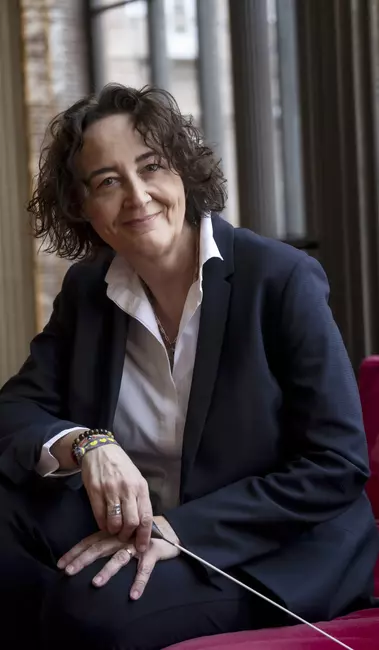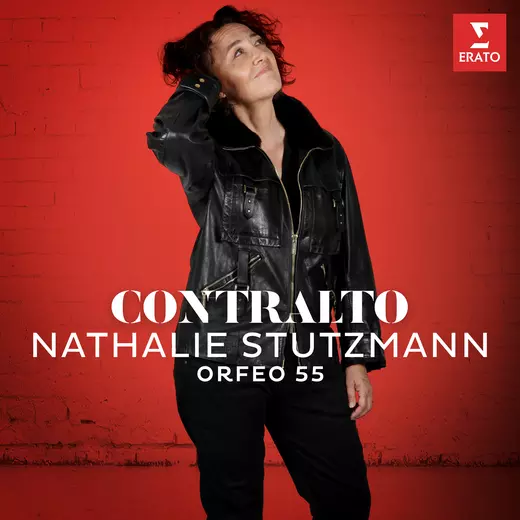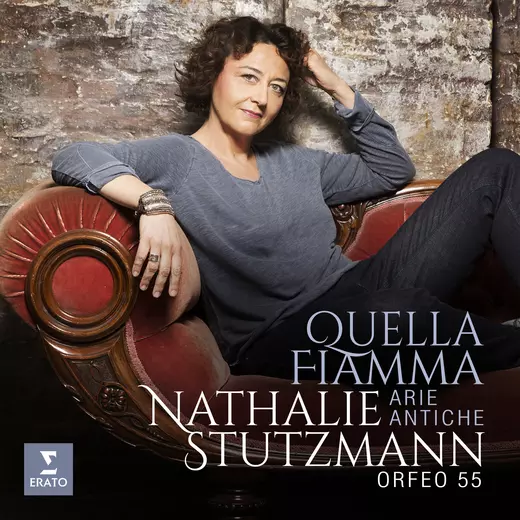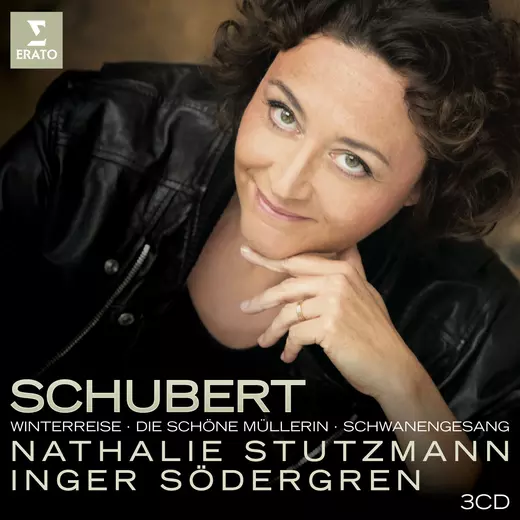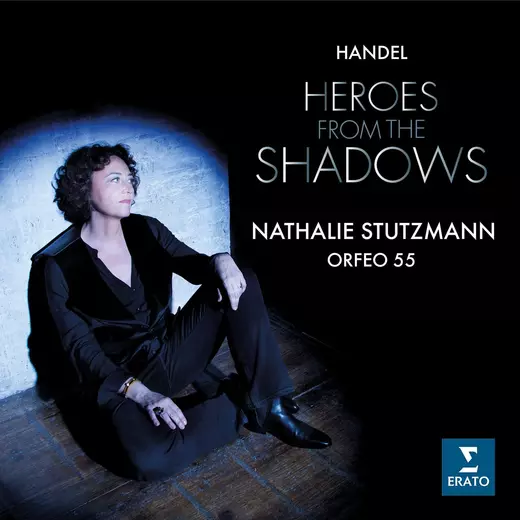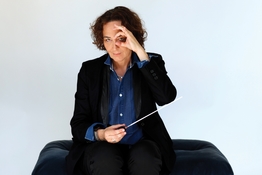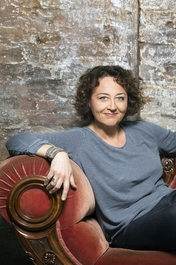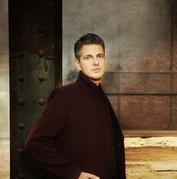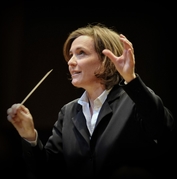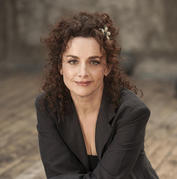‘I couldn’t do without Schubert in my life’ -Nathalie Stutzmann in interview with Nicolas Southon (Translation: Susannah Howe)
This box set brings together your recordings with pianist Inger Södergren of Schubert’s three major song cycles. They were originally issued by the French label Calliope: Winterreise in 2004, Schwanengesang in 2005 and Die schöne Müllerin in 2008. How do you feel about them as you listen to them again now?
Stutzmann: Well, I’m not disowning them, so that’s saying something! [Laughs] Seriously, though, I think the performances are coherent and polished enough to merit being reissued together now. We’ve been able to improve the sound quality of the original recordings, and I’m satisfied that the remastered versions do full justice to the work we did back then.
When did Schubert become part of your musical life? Did you study his music with Hans Hotter when you worked with him at the École de l’Opéra de Paris?
It was indeed Hans Hotter who introduced me to these great song cycles – he told me I’d perform them in recital one day. We studied them together and his approach definitely had an influence on me. I think singing them in the lower register gives them a natural – and crucial – humanity. But I waited a long time before programming or recording these works.
Was that for purely vocal reasons?
Every year I’d have another look at the scores to see how I felt about them. By the age of 30 I felt I could have performed them live. But I waited a bit longer, because I still lacked maturity in terms of broaching their musical conception, the way the songs are threaded together to form a sequence, not to mention a certain serenity, which is something that working with Inger Södergren has certainly helped with.
And this set marks the 20th anniversary of your partnership. You and Inger Södergren have given 400 concerts together and released eight albums since 1994. How did you first meet?
I’d worked with several great pianists, but hadn’t formed a lasting bond with any of them. Then I just happened to go along to one of Inger’s recitals, and that was that! I’d never heard anyone play the way she did. She had wonderful technique, of course, but also an amazing sense of structure and phrasing, and an incredible sound – her performances were breathtaking. I suggested working together and we started with Schumann’s Dichterliebe. Everything fell into place in our very first session together and it’s been the same ever since.
You mentioned the musical maturity that Inger helped you to reach.
Before I met her, I relied entirely on instinct – I was just always very passionate and impetuous. Inger had been shaped by the great piano repertoire and she was calm and reflective, although with immense innate ability as well. When I came into contact with her musical personality, I gradually began to rebuild my own approach. She taught me what it meant to really explore a score in depth. If I hadn’t met her, I would probably never have recorded the Schubert cycles.
How do the two of you work together?
It all flows so easily that we hardly need to talk about it. Inger is really my musical double. We’ve never had to compromise. I recently conducted her in Beethoven’s Third Piano Concerto, which put me in a completely new position: for the first time I wasn’t standing in front of Inger’s piano but behind it, and I was accompanying her, rather than vice versa. Even then, though, we were completely in tune with one another.
Was it also at this point in your career that you felt ready to make the move from intuitive singer to orchestral conductor?
Yes, I’m sure it was. I’d always wanted to conduct, but again I needed the maturity to head off in that direction. After initially training in piano and bassoon, I got completely immersed in my singing. Like many singers, I’d become a little set in my ways. Meeting Inger meant I began looking at scores from every possible perspective again, as a musician rather than just as a singer. I’d never have become a conductor otherwise.
Did you immerse yourself in recordings of Schubert?
Even as a teenager I was listening to Fischer-Dieskau’s incomparable Winterreise recordings. Before I recorded it myself, I studied it in great depth, including the piano part. Only then did I listen to about 40 recordings. I learned something from all of them, even the ones I didn’t like. Sometimes it was a particularly well-executed song, or a way of emphasising a word, or creating a colour. I took some sort of inspiration from all of them, whether consciously or unconsciously.
How would you characterise these Schubert cycles?
Winterreise is the most wide-ranging. It expresses all the suffering that is part of human existence. You also need to be in very good shape to perform it and, contrary to what some might think, in a very good mood! [Laughs] Die schöne Müllerin is a little less dramatic: its view on the world is somewhat jaundiced, but you also hear the rustlings of the forest, the running water of the stream. Nature surrounds us, offering us consolation. As for Schwanengesang, it’s a more artificial collection, made up of Schubert’s final lieder and put together after his death. It’s certainly a less coherent cycle, bringing together poems by Rellstab, Heine and Seidl. When you perform Winterreise or Die schöne Müllerin, it’s as if you were undertaking a long journey, whereas with Schwanengesang, it’s almost as if the individual pieces had been put together to create a traditional recital. The Heine songs are very pared-down. Even more than usual both singer and pianist need to focus on the line and create intense links between the notes, so as to avoid an effect of immobility.
What’s the secret behind recreating the unity of these cycles?
You have to prepare them in great detail and be very patient – that way their mysteries eventually reveal themselves to you. For example, in Winterreise I instinctively felt that there was a rhythmical link between the 24 songs. I kept studying the score every day for weeks. Then one day I was out walking and it all suddenly fell into place: I realised that the steady rhythm of my steps was beating time for the first piece, ‘Gute Nacht’… And the piano chords in that piece represent the steps of the ‘Wanderer’, that inconsolable traveller, moving on aimlessly from place to place… but what was even more astonishing was that my walking pace could also provide the beat for the other songs in the cycle! That’s how I learned one of the organic secrets of Winterreise: its unique pulse, which has to sustain the cycle from first note to the last, and which ends up captivating you.
Do you know if any other altos have recorded Schubert?
I’ve looked, but haven’t found anything. I don’t think any woman has sung the cycles in keys as low as these. Kathleen Ferrier would have made a magnificent job of them, but she probably didn’t dare perform them – in her day it would have been thought bad form for a woman to sing lieder whose narrator was male. Things have changed a bit since then, although there are still a few unrepentant misogynists around! But if we listened to them the female repertoire would be very restricted.
Have you made any specific interpretative choices in these three cycles?
I’ve tried to represent the scores as honestly as possible, but without disappearing into the background. I strongly believe that performers need to trust in their own abilities. That said, all I’ve ever tried to achieve in the Schubert cycles is to be as natural as possible. Every human emotion seems to be present in this music – that’s the key to its extraordinary power. I never get bored with these works: there’s always something new to discover, marvel at or be moved by. These days, I couldn’t do without Schubert in my life. If I were forced to choose a single composer to perform in recital, it would be him, no doubt about it.
Nathalie Stutzmann's Schubert cycles with Inger Södergren are available now in a 3-CD set.
